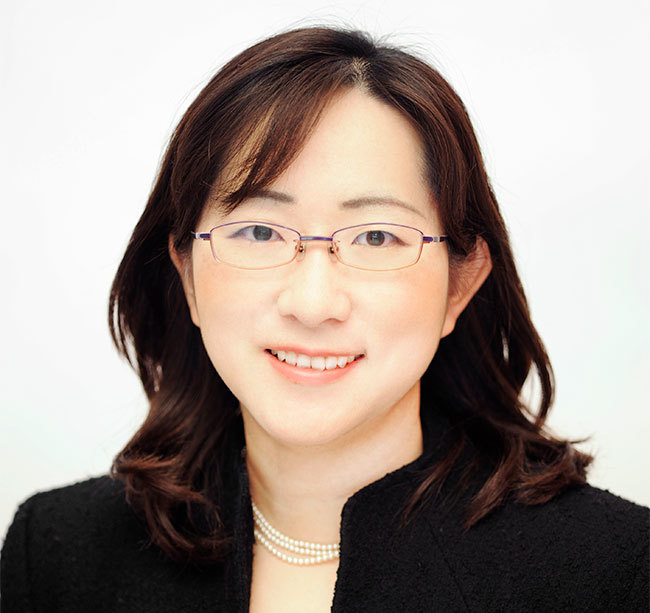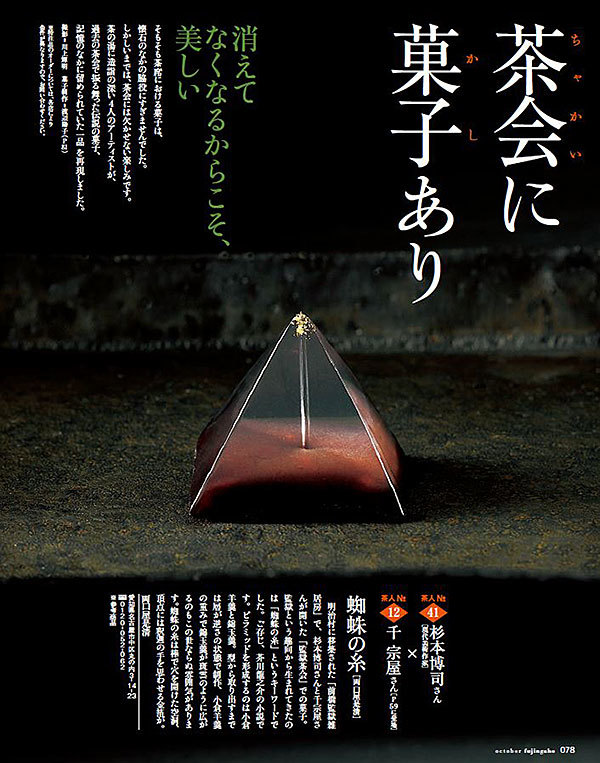Born and raised in Tokyo. My whole family are Giants fans. I saw Sadaharu Oh hit his world record home run at Korakuen Stadium, and when I was in kindergarten, I even wrestled with Shigeo Nagashima in the park. But I'm a die-hard Chunichi Dragons fan. I was captivated by the light blue uniform Kenichi Tanizawa wore on a single pro baseball card that came with a snack, and I've been loyal ever since.
"So I've got a soft spot for Nagoya, but you know, I just don't really feel the city's culture, you know?"
At a gathering, I was grumbling about this with a drink in hand when Chiyoko Oshima, Managing Director (13th generation) of "Okashi-jo Ryoguchiya Korekiyo," founded in 1634, smiled and said, "Please come visit us sometime."
I visited, trembling inside, thinking I'd really upset her, but she taught me so much.

Chiyoko Oshima
"When you think of Japan's three great confectionery centers, Kyoto, Kanazawa, and Matsue come to mind, right? But Nagoya, the heartland of the Owari Tokugawa clan—the foremost of the three major Edo-period feudal houses—has a culture rooted here that rivals even Kyoto's. After all, Nishio City, one of Japan's premier matcha production areas, is also near Nagoya. The reason this isn't widely known might be because we haven't been doing a good job communicating it."

Spring in the Capital
"There's a confection called 'Capital Spring' that represents spring. It was inspired by the verse from the Kokin Wakashū: 'Looking around, willows and cherry trees mingle together; the capital is a brocade of spring.' Incidentally, Nagoya's center has a major street called 'Nishiki-dori'. 'Nishiki' (brocade) is also famous as a bustling district. Apparently, they took the existing Sakura-dori and Yanagi-yakushi streets, drew parallels to this poem, and used 'Nishiki' for the new street name. Pretty culturally rich area, right? (laughs)"
At this long-established shop nurtured in such a region, Ms. Oshima (who surely has many other responsibilities) also fulfilled a role akin to a "Creative Director" at an advertising agency.
"Beyond the products sold in the shop, a crucial part of my work is creating 'haute couture'-style sweets tailored to customer requests. I propose sweets themed for events like tea ceremonies or celebrations. For instance, there was a gathering where Meiji Village's prison was transformed into a tea room, and we were asked to create sweets fitting for that setting. After much deliberation, the idea I arrived at was inspired by Ryunosuke Akutagawa's 'The Spider's Thread'. I wanted to express a single thread of hope, sent down from paradise, into a prison evoking the depths of hell. I conveyed this to the artisans, and together through trial and error, we brought it to completion."

The Spider's Thread (Fujingaho, October 2018 issue)
Articulating ideas to solve problems with no clear answers and guiding team members is precisely the job of a creative director.
That's precisely why the advertising industry often says things like "No 'It just feels good' allowed." It's about cultivating the habit of not stopping when something feels intuitively good, but instead thoroughly thinking through the reasons why and putting them into words. When I mentioned this and said, "Wagashi and advertising are the same, aren't they? (laughs)," Mr. Oshima looked slightly troubled.
"Half true, half not. It's true we often use words to address how to respond to a given theme. I fully understand the importance of putting my own 'I kinda want it like this' feeling into words and communicating it to the artisans. But we can't just make delicious sweets. We must create sweets that are 'Ryoguchiya Koreshige-like'. No matter how delicious, if it isn't Ryoguchiya Koreshige-like, it's no good. And this 'Ryoguchiya Koreshige-ness' cannot be expressed in words.
For example, even when expressing the same maple leaf motif, the approach differs between confectioners. If I had to put it into words, Ryoguchiya Koreyoshi sweets might be described as "more abstract, with subtle hues." But that kind of understanding comes through daily production, looking at the actual sweets, and through repeated conversations like, "This flavor or expression feels like Ryoguchiya Koreyoshi," or "This part doesn't feel like Ryoguchiya Koreyoshi." It becomes internalized through that process.
For me and the veteran artisans, our senses naturally align. We compare against that standard: 'It feels just right, doesn't it?' 'Yes, it does.' That's all it takes."
"Something about it feels right" is actually the OK signal!
Is this the difference between an advertising agency, which has a responsibility to explain everything to the client, and a wagashi shop, where the artisans themselves are half the client? But how does a team share something as vague as "sensibility," especially one preserving nearly 400 years of tradition?
The mystery only deepens, but we're running out of pages. To be continued next time.
Please, enjoy!









